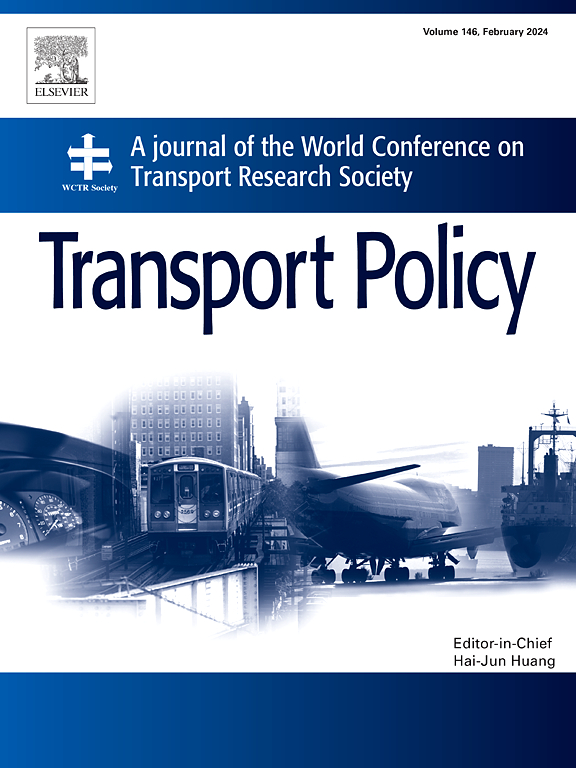Rural roads and economic development: Insights from India
IF 6.3
2区 工程技术
Q1 ECONOMICS
引用次数: 0
Abstract
Road connectivity is critical for socioeconomic development in rural areas. Unfortunately, significantly large proportions of rural populations worldwide, particularly in relatively lower-income countries, still lack access to all-weather roads. I leverage data from the first phase of India's Pradhan Mantri Gram Sadak Yojana (PMGSY) – the Prime Minister's Village Road Scheme – to analyze whether the provision of basic single-lane all-weather road links to previously unconnected rural habitations has led to growth in economic performance, specifically in the agriculture sector. I empirically investigate whether, all else equal, districts that made greater progress in rural road connectivity – in terms of km of new road constructed and the number of new habitations connected, relative to targets – over the first decade of the PMGSY experienced greater levels of growth in per capita GDP, overall and in the agriculture sector. Results show that new rural road development can indeed have a significant positive impact on per capita agriculture GDP growth; places with relatively lower baseline agricultural performance can benefit more. A series of OLS, Spatial Error, and 3SLS models confirm the reliability of estimated effects. In addition to demonstrating the positive economic impact of the PMGSY in India, specifically its contribution to growth in economic performance and productivity in the agriculture sector, this study underscores the economic rationale of rural road connectivity investments across the developing world.
农村道路与经济发展:来自印度的见解
道路联通对农村地区的社会经济发展至关重要。不幸的是,世界上相当大比例的农村人口,特别是在相对较低收入的国家,仍然无法获得全天候道路。我利用印度总理乡村道路计划(Pradhan Mantri Gram Sadak Yojana, PMGSY)第一阶段的数据,分析向以前没有交通的农村居民提供基本的单车道全天候道路是否导致了经济绩效的增长,特别是在农业部门。我通过实证调查,在其他条件相同的情况下,在PMGSY的第一个十年中,在农村道路连通性方面取得更大进展的地区(相对于目标而言,按新建道路的公里数和连接的新居民数量计算),总体上和农业部门的人均GDP增长水平是否更高。结果表明,新农村公路建设确实对人均农业GDP增长有显著的正向影响;基线农业绩效相对较低的地方可以受益更多。一系列OLS、Spatial Error和3SLS模型证实了估计效果的可靠性。除了展示PMGSY在印度的积极经济影响,特别是其对农业部门经济绩效和生产力增长的贡献外,本研究还强调了发展中国家农村道路连通投资的经济原理。
本文章由计算机程序翻译,如有差异,请以英文原文为准。
求助全文
约1分钟内获得全文
求助全文
来源期刊

Transport Policy
Multiple-
CiteScore
12.10
自引率
10.30%
发文量
282
期刊介绍:
Transport Policy is an international journal aimed at bridging the gap between theory and practice in transport. Its subject areas reflect the concerns of policymakers in government, industry, voluntary organisations and the public at large, providing independent, original and rigorous analysis to understand how policy decisions have been taken, monitor their effects, and suggest how they may be improved. The journal treats the transport sector comprehensively, and in the context of other sectors including energy, housing, industry and planning. All modes are covered: land, sea and air; road and rail; public and private; motorised and non-motorised; passenger and freight.
 求助内容:
求助内容: 应助结果提醒方式:
应助结果提醒方式:


